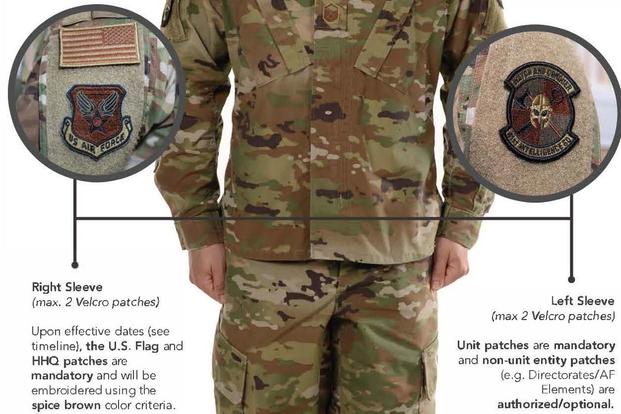Army Combat Patch Regulation
The Army Combat Patch Regulation is an important aspect of the United States Army's uniform guidelines. It determines the proper wear and display of combat patches, which are designed to recognize soldiers' service in specific combat zones. In this article, we will delve into the details of this regulation and provide you with all the information you need to know.
What is the Army Combat Patch Regulation?
The Army Combat Patch Regulation, also known as AR 670-1, is a set of guidelines established by the U.S. Army to regulate the wear and display of combat patches on the Army Combat Uniform (ACU). These patches are worn on the right shoulder of the ACU as a symbol of a soldier's service in a specific combat zone.

Image source: Beautiful Latin Ass
Understanding the Importance of Combat Patches
Combat patches hold significant importance within the U.S. Army. They serve as a visual representation of a soldier's combat experience and signify their dedication and bravery. These patches are not handed out lightly; they are earned through grueling and hazardous combat service in specific war zones.

Image source: thepiratebaylending
Proper Wear of Combat Patches
According to AR 670-1, combat patches are to be worn on the right shoulder of the ACU. The patch should be centered and positioned approximately 1/2 inch below the top of the Velcro pad. It is important to ensure that the patch is sewn or attached securely, as the Army regulations prohibit using staples, glue, or tape to attach them.
FAQs
1. Can I wear more than one combat patch?
Yes, you can wear multiple combat patches if you have served in multiple combat zones that are approved for recognition. However, if you have served in multiple branches of the military, you are only authorized to wear the combat patch associated with your current branch of service.
2. Can I wear a combat patch if I served in a non-combat role?
No, combat patches are specifically reserved for those who have served in combat zones. If you served in a non-combat support role, you are not eligible to wear a combat patch.
3. What should I do if my combat patch gets damaged or lost?
If your combat patch becomes damaged or lost, it is your responsibility to get a replacement. You can obtain a replacement patch through your unit's supply section or by visiting your local military clothing sales store.
Overall, the Army Combat Patch Regulation plays a crucial role in ensuring the proper recognition and display of a soldier's combat experience. It is essential for every soldier to familiarize themselves with these guidelines to maintain uniformity and uphold the traditions of the U.S. Army.
Army Hot Weather Uniform Regulation - Cool Product Product Reviews
 Image Source : pougbfgqu.blogspot.com
Image Source : pougbfgqu.blogspot.com Ab 1945 Militaria Multicam Army ISAF OCP Abzeichen Patch 27
 Image Source : alohaglamp.pl
Image Source : alohaglamp.pl New Army Regulation Combat Patch - Thepiratebaylending
 Image Source : thepiratebaylending.weebly.com
Image Source : thepiratebaylending.weebly.com contracts fuerzas seragam standar tentara salary medic
Combat Control Team CCT Multicam Controller Air Support USAF AFSOC Hook
 Image Source : renovstory.com
Image Source : renovstory.com Wear Of The Acu Uniform - Beautiful Latin Ass
 Image Source : www.sentertainmentplus.com
Image Source : www.sentertainmentplus.com acu ocp oef ucp enduring
GENUINE U.S JOINT DOD COLOR ARMY PATCH Original Current Military
 Image Source : darzaresorts.com
Image Source : darzaresorts.com Wear Of The Acu Uniform - Beautiful Latin Ass
acu
Army Combat Patch (SSI FWTS) Regulation - YouTube
 Image Source : www.youtube.com
Image Source : www.youtube.com army patch combat regulation
Wear of the acu uniform. Ab 1945 militaria multicam army isaf ocp abzeichen patch 27. New army regulation combat patch. Army combat patch (ssi fwts) regulation. Contracts fuerzas seragam standar tentara salary medic